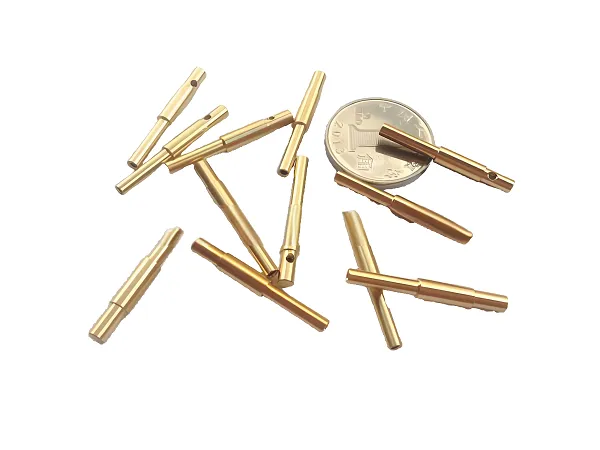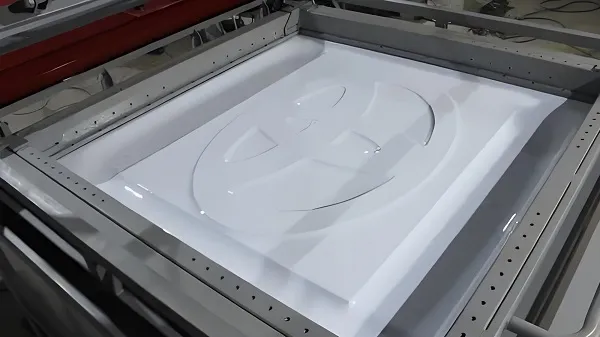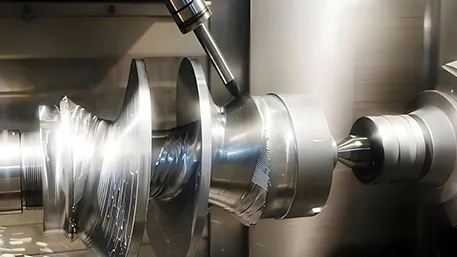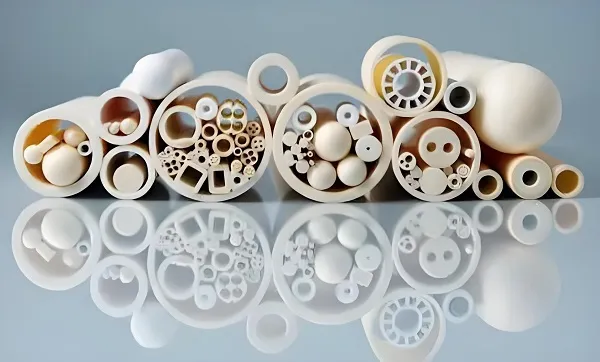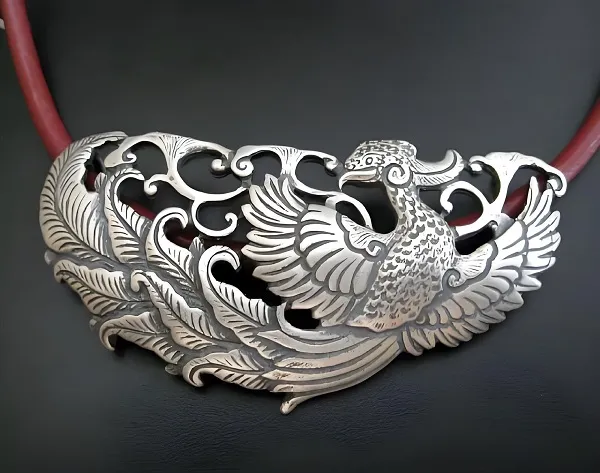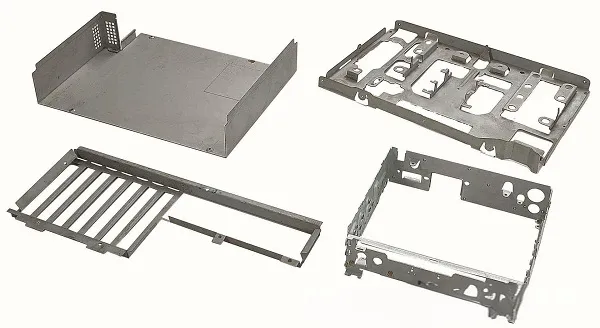In fields such as aerospace, medical devices, and high – end equipment manufacturing, titanium alloy has become an ideal material for key components due to its high strength, low density, excellent corrosion resistance, and biocompatibility. The precision titanium alloy parts CNC machining service, through professional equipment, special processes, and full – process quality control, controls the dimensional tolerance within ±0.005mm and the surface roughness Ra≤0.8μm, providing high – precision and high – performance titanium alloy machining solutions for the industry.

I. Why can traditional machining hardly meet the requirements of precision titanium alloy machining?
Q&A: What are the core challenges of precision titanium alloy parts CNC machining?
The physical and chemical properties of titanium alloy bring three core pain points to traditional machining:
Extremely low machining efficiency: Titanium alloy has poor thermal conductivity (the thermal conductivity coefficient is only 1/7 that of steel). During cutting, heat concentrates on the tool edge. The service life of ordinary tools is only 1 – 2 hours, the cutting speed is less than 50m/min, the machining efficiency is 80% lower than that of aluminum alloy, and the cost increases significantly.
Difficult to control accuracy: Titanium alloy has a low elastic modulus. Cutting force easily causes part deformation. The dimensional error after traditional machining can reach ±0.15mm. At the same time, severe work – hardening further increases the risk of out – of – control dimensional accuracy.
Surface quality defects: During the cutting process, titanium alloy easily bonds with the tool, resulting in surface defects such as tearing and scratches. The surface roughness Ra value often reaches 6.3μm, which cannot meet the strict requirements of the aerospace and medical fields.
Core advantages of precision CNC machining service:
Efficient and high – precision machining: By using special tools and optimized cutting parameters, the cutting speed is increased to 80 – 120m/min, the tool life is extended to more than 8 hours, the dimensional tolerance is controlled within ±0.005mm, the efficiency is increased by 60%, and the cost is reduced by 35%.
Full – process quality assurance: From material selection to finished – product inspection, advanced equipment and testing technologies are used to ensure stable part performance and excellent surface quality, meeting the high – standard requirements of various industries.
II. How to achieve breakthroughs in the core processes of precision titanium alloy parts CNC machining?
Innovation of special equipment and tools
High – performance machining equipment: Equipped with a five – axis linkage high – speed machining center (spindle speed 18,000 – 24,000rpm), the positioning accuracy reaches ±0.003mm, the repeat positioning accuracy is ±0.001mm, and it has a dynamic vibration – damping system to reduce machining vibration and improve accuracy and surface quality.
Special tool materials: Use CBN (cubic boron nitride) and PCBN (polycrystalline cubic boron nitride) tools with a hardness of HV3000 – 5000. Their wear resistance is 5 – 10 times that of carbide tools. The surface is coated with TiAlN and TiCN nano – coatings (thickness 1 – 3μm) to reduce the friction coefficient, reduce tool wear, and increase the cutting speed to 150m/min.
Geometric optimization of tools: Design tool structures with a large rake angle (8° – 12°) and a large helix angle (30° – 35°) to improve chip – removal performance. Optimize the edge blunt radius (0.01 – 0.02mm) to reduce cutting force and suppress work – hardening.
Advanced machining processes
Cryogenic minimum quantity lubrication (MQL): Use a composite cooling and lubrication method of – 20℃ cryogenic cold air and a small amount of plant – based cutting fluid (flow rate 0.05 – 0.1ml/min), which can reduce the temperature in the cutting area by 40%, reduce the bonding between the tool and the workpiece, extend the tool life by 60%, and reduce the surface residual stress by 50%.
High – speed milling technology: Adopt a processing strategy of small cutting depth (0.1 – 0.3mm) and high feed rate (800 – 2000mm/min) to reduce the accumulation of cutting heat, improve the surface quality. The surface roughness Ra can be reduced to 0.4μm, and the machining efficiency is increased by 30% at the same time.
Electrical discharge machining (EDM): For complex surfaces, deep small holes (aperture ≤ 0.5mm), and thin – wall structures (wall thickness ≤ 0.3mm), use the EDM technology. Through the electrode wear compensation algorithm (accuracy ±0.003mm), high – precision machining can be achieved, avoiding the deformation risk of traditional cutting machining.
Digital machining control system
Processing simulation and optimization: Use software such as VERICUT and ANSYS to simulate the titanium alloy cutting process, predict the distribution of cutting force, cutting heat, and tool wear, optimize the tool path and cutting parameters, reduce the number of trial – cuts by 90%, and avoid material waste and tool damage.
Intelligent parameter regulation: Real – time collect more than 50 parameters such as spindle power, cutting force (accuracy ±1N), and tool vibration (resolution 0.1μm). The AI algorithm automatically adjusts the feed rate and cutting depth to compensate for tool wear and material hardness fluctuations. The product qualification rate is increased from 75% to 96%.
Digital twin monitoring: Create a digital twin model for each processing project, real – time track the processing progress, equipment status, and quality data, predict the trend of processing errors, and adjust the process in advance, reducing unplanned downtime by 40%.
III. Quality control: Stringent verification from materials to finished products
Multi – dimensional performance testing system
Material – level screening:
Composition analysis: Use a spectrometer to detect the chemical composition of titanium alloy materials to ensure that the contents of elements such as Al, V, and Fe meet the ASTM B265 and GB/T 3620 standards, and the impurity contents (such as O≤0.25%, N≤0.05%) meet the standards.
Mechanical properties: Use a universal material testing machine to detect the tensile strength (≥900MPa), yield strength (≥825MPa), elongation (≥10%), and use a hardness tester to measure the Rockwell hardness (HRC 30 – 35) to ensure that the material properties meet the design requirements.
Metallographic inspection: Observe the microstructure of the material to ensure that the grain size is uniform (grain size ≥ 7 levels), and there are no segregation, inclusions, and other defects to ensure the internal quality of the material.
Finished – product – level testing:
Dimensional inspection: Use a coordinate measuring machine (accuracy ±0.003mm) and a laser tracker (accuracy ±0.005mm) to detect key dimensions and geometric tolerances (roundness ≤ 0.003mm, parallelism ≤ 0.005mm). For small – diameter holes, use an image measuring instrument (accuracy ±0.001mm) for high – precision detection.
Surface quality: Use a microscope (magnification 500 times) to detect surface scratches and burrs, and use a white – light interferometer to measure the surface roughness to ensure that there are no defects affecting assembly and use, and the surface roughness Ra≤0.8μm.
Function testing: Conduct high – temperature fatigue tests (650℃, 10⁷ cycles) on aero – engine parts, and conduct biocompatibility tests (cytotoxicity and sensitization tests) on medical device components to verify the actual use performance.
Intelligent defect prevention technology
The first – piece thirteen – inspection system: The engineer team strictly inspects 45 indicators of the first – piece part, such as material batch, tool parameters, and processing dimensions. Use an electron microscope (magnification 1000 times) to detect micro – defects to ensure zero – error production.
Real – time process monitoring: Through the tool wear monitoring system (resolution 0.001mm) and vibration sensors, real – time early – warning of abnormal situations such as tool breakage and cutting chatter. Once a sudden change in the signal is detected, the system automatically stops and alarms within 0.1 seconds to prevent batch defects.
IV. How does precision machining balance high – precision and economy?
Q&A: Does high – precision titanium alloy machining necessarily come with high costs?
Through three innovative models, the precision titanium alloy parts CNC machining achieves a cost reduction of 30% – 40% and an efficiency increase of 50%:
Intelligent tool life management: Deploy a tool health monitoring system, predict the tool life through cutting – force spectrum analysis (error < 3%), and automatically remind for tool change, reducing downtime by 25% and tool costs by 40%.
Process integration and optimization: Integrate multiple processes such as turning, milling, grinding, and electrical discharge machining in a compound machining center, reduce the number of clamping times, increase the machining efficiency by 40%, and at the same time reduce equipment investment and site occupation costs.
Cost reduction by digital twin: Use the digital twin model to replace 3 – 4 physical trial – cuts, saving 35% of material loss costs, shortening the R & D cycle by 15 – 20 days, and quickly responding to market demands.
V. Core considerations for choosing a precision titanium alloy parts CNC machining service
Equipment and technical strength: The supplier should have advanced equipment such as five – axis high – speed machining centers, electrical discharge machining machines, and cryogenic minimum quantity lubrication systems, as well as core technologies such as CBN tool application and high – speed milling.
Industry certification qualifications: Have certifications such as ISO 9001, AS9100D (aerospace), ISO 13485 (medical devices), and CNAS – approved test reports to ensure that products meet international standards.
Digital service capabilities: Have digital tools such as processing simulation, AI process optimization, digital twin, and cloud – based traceability to achieve transparent and intelligent management of the whole process, ensuring processing quality and delivery cycle.
Conclusion
The precision titanium alloy parts CNC machining service, driven by technological innovation and intelligent management, breaks through the technical bottlenecks of traditional machining, providing high – precision and high – performance component manufacturing solutions for fields such as aerospace, medical devices, and high – end equipment. In the wave of the transformation of the manufacturing industry towards “precision and intelligence”, the machining service with “advanced equipment + special processes + nanometer – level quality control” is becoming the core competitiveness for enterprises to break through technical barriers and seize the high ground of the market. From the key blades of aero – engines to the precision components of artificial joints, the precision titanium alloy CNC machining service will continue to help the transformation and upgrading from “Made in China” to “Intelligently Made in China” with excellent precision and quality.
(Contact us now to get a customized precision titanium alloy parts CNC machining solution and free process evaluation service)

